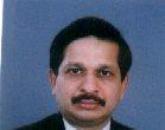
It is estimated that currently India’s deceased donation rate is 0.08 per million population per year. The deceased donation programme is currently confined to about twenty multi-specialty hospitals that have good infrastructure logistics and are able to provide facilities such as counselling service for families of brain dead donors and have a waiting list of patients with end stage organ failure. Initially in 1999, a meeting of six hospitals that were regularly doing deceased donations in Tamil Nadu was arranged by MOHAN Foundation. The hospitals decided to form a network to share their organs and thus evolved the first formal organ sharing network in the country. A similar sharing network was started by MOHAN in Andhra Pradesh in 2003, where they employed grief counsellors who could explore the possibilities of organ donation. In both the states the MOHAN network has facilitated the sharing of over 400 deceased donor organs. This is almost 33% of the total deceased transplants (about 1400) done so far in India. In Gujarat and Maharastra over 300 deceased donations have taken place in the last ten years.
More recently the department of Health of the Government of Tamil Nadu has decided to network all 54 hospitals that have license for organ transplants and promote the deceased donation programme in the state. Legislations have been formulated using the expertise of hospitals and NGOs that have worked in this area for the past ten years. A Tamil Nadu web based organ sharing waiting list registry has also been launched where the hospitals are able to enter their waiting list data (www.tnos.org).
The overall potential of organ donation from brain death in India is extremely high. With increasing density of motor vehicles and poor implementation of traffic regulations the number of fatal deaths due to road traffic accidents exceeds 80,000 deaths per year. It is estimated that 50% of such deaths are due to brain death. The current donation rate if pushed to 1 per million population from 0.08 would take care of the requirement for all the livers, heart and lungs in the country and to some extent the kidney shortage. If this figure reaches 3 or 4 per million, there may be no necessity for doing living kidney donations.

Comments should be on the topic and should not be abusive. The editorial team reserves the right to review and moderate the comments posted on the site.
More info about the above in the article - Nephrologists Sans Frontières Kidney International 77, 378-380 (March (1) 2010) | doi:10.1038/ki.2009.494 Deceased-donor renal transplantation program in IndiaNephrologists Sans Frontières Georgi Abraham, Sunil Shroff, Karopadi Shivanand Nayak, Jayakumar Matcha, Mohan Rajapurkar, Yuvaram N V Reddy, Varun Sundaram and Yogesh N V Reddy Abstract The crude and age-adjusted incidence rates of end-stage renal disease are estimated to be 151 and 232 per million population, respectively, in India.1 Chronic kidney disease in India is predominantly due to diabetes mellitus and hypertension, as shown by data from the Indian CKD registry, comprising 36,000 patients.